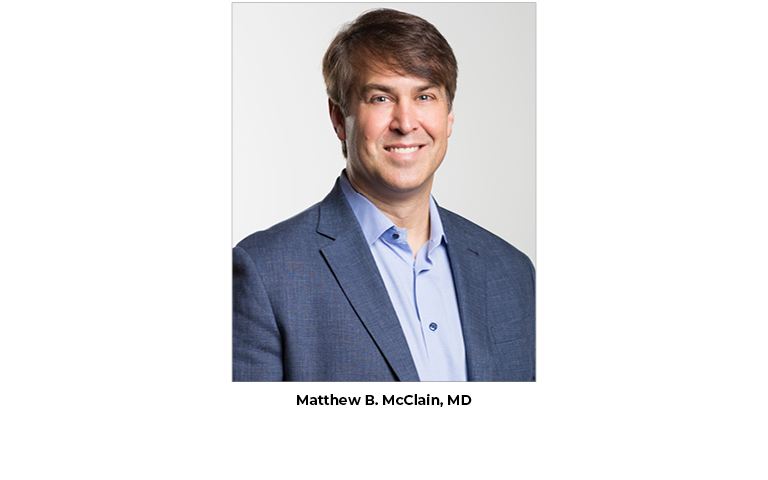While the world watched the COVID-19 virus trace a devastating path to North America in early 2020, Matthew B. McClain, MD, of Rome Radiology Group, P.A., in Georgia, was paying close attention to news of the virus and tracking possible treatments. An interest in convalescent plasma therapy led McClain to approach his local hospital about studying the treatment to help patients in his community. The Bulletin spoke with McClain to discuss his experience participating in clinical investigational research and how convalescent plasma therapy may help COVID-19 patients.
How did you approach conversations with local stakeholders about convalescent plasma therapy benefits and distribution methods?
I had an interest and read quite a bit about the use of convalescent plasma in the treatment for coronavirus in China and the use of convalescent plasma in recent history with Ebola, MERS, and SARS. I contacted two local hospitals in Georgia, and one chief medical officer quickly dismissed the suggestion — she felt it wasn’t a practical idea. After numerous rejections from other hospitals, I tapped into my network of physician colleagues and was connected to Arturo Casadevall, MD, MS, PhD, and Shmuel Shoham, MD, of Johns Hopkins Bloomberg School of Public Health, who provided me with their investigational new drug application — as well as an introduction to Michael J. Joyner, MD, a physician-researcher at the Mayo Clinic.
No expanded access program (EAP) had been written yet, which is how the FDA allows organizations to deliver investigational new drugs while collecting and evaluating data. The Mayo Clinic’s national EAP offered the quickest route to deploying convalescent plasma collection and administration in Rome. To participate in the EAP, I founded Plasma Therapy, a nonprofit that collects plasma donations from patients who have recovered from the disease to treat those who are struggling to survive. I sat down and wrote the first of two applications for the FDA. These are long documents that are required to start a study of this nature on your own, but that’s how seriously I was taking this emerging pandemic. After authoring the documents, I went back to the hospital that had initially passed on the project. Once I was able to demonstrate that we had a practical plan, the hospital leadership were willing to listen and ultimately agreed to participate in the trial.
What were the initial results of the trial?
This program was a practical scientific study — it was meant to evaluate the population of patients who receive plasma without a placebo control. There has been and remains a question of efficacy, and a lot of it is about the quality of the plasma, the characteristics of the antibodies in the plasma, and the timing of administration. Early studies suggest that using it too late doesn’t provide any measurable benefits but giving it early may be critical.1
This project was another job on top of an already busy career. But I would do it all over again because I was able to contribute to the community and to local healthcare.
What advice do you have for other radiologists who are interested in conducting similar investigational research?
You have to be prepared to do a mountain of work — and not take no for an answer. Since I work in private practice, I haven’t had the opportunity to do much research so I did a lot of work from the ground up and had to go through the process of reinventing the wheel. This project was another job on top of an already busy career. Getting people on board took quite a bit of effort. It took a lot of convincing and demonstrating that we had the knowledge base and wherewithal to coordinate this type of project.
But I would do it all over again because I was able to contribute to the community and to local healthcare. It was not a silver bullet — but it was a point of hope to people as we continue to fight this virus.

